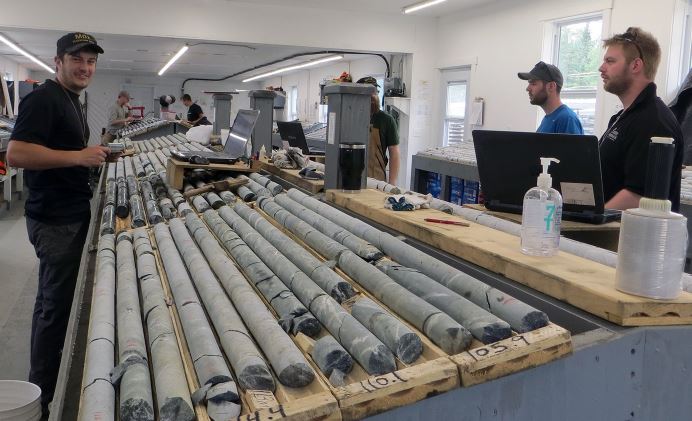Marathon Gold tables Valentine PFS, stock rallies

Marathon Gold Corp. [MOZ-TSX; OTC-MGDPF] on Monday April 6 released a pre-feasibility study (PFS) for its Valentine Gold Project in central Newfoundland. It said the PFS envisages an open pit mining operation with low initial capital costs and a high rate of return over a 12-year mine life, with average gold production of 175,000 ounces annually in years one to nine from the processing of high-grade mill feed.
In years 10-12, the PFS indicates that processing of low-grade stockpiled material would produce an average of 54,000 ounces per year. The total all-in-sustaining cost is forecast at US$739 an ounce.
Other highlights include a life-of-mine capital requirement of $545 million, including an initial capital cost of $272 million.
The PFS is based on Proven and Probable Reserves of 1.87 million ounces of gold (41.5 million tonnes at 1.41 g/t gold), as well as a simplified execution strategy based on open pit mining, conventional milling and thickened tailings deposition, with no heap leaching.
Marathon Gold advanced on the news, rising 12% or 13 cents to $1.24. The shares are currently trading in a 52-week range of 71 cents and $1.76.
The Valentine Gold Camp hosts four near-surface, mainly pit-shell constrained, deposits. The majority of the resources occur in the Marathon and Leprechaun deposits, which also have resources below the pit shell. Both deposits are open at depth and on strike.
Gold mineralization has been traced down over 350 metres vertically at Leprechaun and almost a kilometre at Marathon.
The four deposits outlined to date occur in a 30-km gold trend on the property, with much of the 24,000-hectare property having had little detailed exploration activity to date.
The Valentine Lake PFS contemplates completion of a feasibility study in the first half of 2021, completion of the environmental assessment and Ministerial approval by mid-2021, and the commencement of site-specific permitting thereafter.
Ground-breaking for site construction is scheduled for January 1, 2022 with a total 18-month construction period and first gold production by mid-2023.
“We have taken the approach of identifying the optimum starting point for mining at Valentine, emphasizing highest rate of return and lowest risk, while recognizing that the large resource inventory and extensive exploration potential along strike and at depth offers plenty of opportunity for mine life extension,” said Marathon Gold President and CEO Matt Manson.
Back in January 2020, the company released an updated mineral resource estimate for Valentine. The new estimate was based on infill drilling in 2019 at the Leprechaun and Marathon deposits.
The company said Measured and Indicated Resources stand at 3.09 million ounces (54.9 million tonnes at 1.75 g/t gold), an increase of 400,000 ounces, or 15% in comparison with a previous estimate announced in October 2018.
On top of that is an Inferred Resource of 960,000 ounces (16.8 million tonnes at 1.78 g/t gold), a decrease of 570,000 ounces, or 37%, compared with the previous estimate. This represented a conversion of 26% of the project’s Inferred Mineral Resources to higher confidence Measured and Indicated categories and a loss of 11%, with 63% remaining.
The company said the new estimate includes total high-grade, open pit Measured and Indicated Resources of 2.58 million ounces (30.6 million tonnes at 2.62 g/t gold) and low grade, open pit Measured and Indicated Resources of 340,000 ounces (22.9 million tonnes at 0.47 g/t gold) available for use in the continuing Valentine gold project feasibility study.
The Valentine Lake Gold Camp is accessible by year-round roads and is located in close proximity to Newfoundland’s electrical grid.
The project’s total Measured and Indicated Resources now stand at over 3.0 million ounces. Most of the latest increase has come from the Leprechaun deposit, which now contributes over one million ounces of higher confidence mineral resources to the overall project inventory.
